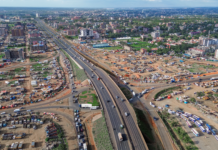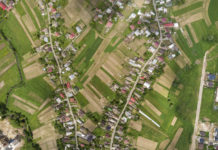For the longest time land transaction in Kenya were done manually, but last year the government implemented the online aspect. This was in regards to making the land buying/selling process easier.
What does this mean?
In retrospect, digitization means you can register your property without a hassle. Moreover, it was also in regards to allowing property evaluation to be easier. The whole property registration process is to take 24hours.
The system will promote transparency and it is geared in restoring sanity in land transactions and property owners across the country
What was promised of the system
The computerization initiative was meant to improve service delivery by dealing with documents disappearance, failed file tracking system, tattered records in the land registries, poor Ministry image and long timelines of service delivery among other challenges.
What does the Digitization entail?
1. Reconstruction of Records
The automation meant the reconstruction of records registered under Government Lands Act (GLA) regime which were in a poor state, making it extremely difficult to conduct searches. It also includes the creation of a property database system such that a property value database is created at the valuation division of lands.
2. A File Tracking System
Developing a file tracking system for all settlement plot files meant there will be an efficient allocation of settlement files; reduction in time taken to retrieve settlement plot files for action; reasonable timelines in all settlement transactions and reduced cases of missing file and an integrated and unified form makes the procedures run simultaneously.
3. Document Management System
The automation also involves the creation of a Document Management System (DMS) for all approved physical development plans in the country. So as to reduce the time taken for vetting and verifying plans submitted for approval by the County physical planners and time taken by officers, professionals and members of the public to access and retrieve any authenticated survey plan. They provide easy storage, security and back up in the event of loss and to provide a survey plan that can be used by many officers at a time for quality control checks.
Further, it entails developing a Document Managing System for Land Title Documents Records that is scanning, indexing and archiving of deed files, land rent cards and green cards.
4. Land Rent Database System
There was also the development of a Land rent information database system handling payment of land rent and issuing demand notices. It also involves the production of digital topographical maps; establishment of the Kenya National Spatial Data Infrastructure aimed to create a platform of discovery and access of spatial information to facilitate data sharing through the internet, and creation of land information for informal settlements meant to map out informal settlements.
Why the Digitization didn’t happen sooner
The automation programme has stalled due to various challenges including torn and missing land records; issue of capacity building; poor working environment; poor staff attitude; lack of integration by the department; use of outdated procedures and practices.
This, in turn, has affected the general public and professionals who count on efficiency in the land registries. Despite the challenges, there is hope going by countries that have taken this path. The United States, for example, has been successful in digitizing land records.
The Bottom Line:
Digitisation is a blessing because it is faster and more flexible, convenient, saves money wasted on managing the paper records, provides long term preservation of records than papers and It allows sharing of knowledge within and across the lands.
The transition from the first registration regime to the current one and finally to digitization of records has led to increased efficiency in conducting business and improved accountability mechanisms.
More needs to be done to ensure the digitization process is a success.














